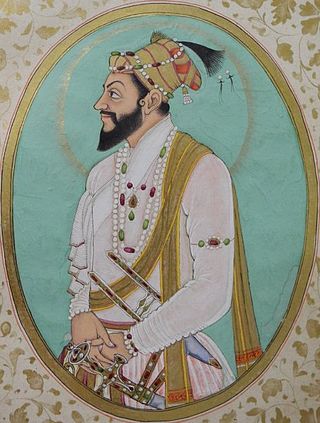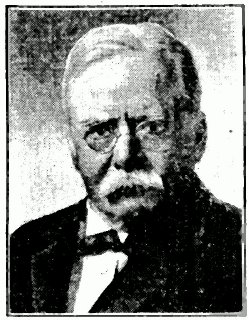The Cambridge History of India was a major work of historical scholarship published in five volumes between 1922 and 1937 by Cambridge University Press. Some volumes were also part of The Cambridge History of the British Empire . Production of the work was slowed by the First World War and the ill health of contributors, and Volume II was eventually abandoned.
The Cambridge Shorter History of India , edited by H. H. Dodwell, appeared in 1934. The New Cambridge History of India was published from the late 1980s.
E. J. Rapson noted in his Preface to Volume I that the bulk of that volume had been prepared by 1914, but the onset of the First World War had delayed completion. Rapson was an authority on the coins of ancient India, and once worked in the Department of Coins and Medals at the British Museum. The Times noted in their review of the volume that coin evidence provided some of the only sources for the earliest rulers mentioned, there being in many cases no surviving written sources. [1]
Rapson was known for his scrupulous attention to detail and for checking not only his own references carefully, but the references of every other contributor. He also invariably agreed to help fellow scholars with their work. These factors, possibly combined with increasing age, meant that Volume II of the History, for which he was the editor, was incomplete at the time of his death in 1937. [2] He had confided to colleagues that the slow pace of the work meant that large parts of it needed to be updated to include the latest scholarship. [2] It remains unpublished. [3]
Volumes III and IV were assigned to Wolseley Haig, former Professor of Arabic, Persian and Hindustani at Trinity College, Dublin. Later, lecturer in Persian at the School of Oriental Studies, University of London. Unfortunately, Haig was only able to fully complete volume III before illness set in and volume IV had to be completed by Richard Burn to Haig's plan. It was published in 1937, the year before Haig's death. [4] Reviewers complained it was too old-fashioned in methods; one said it was "history as it was understood by our grandfathers." [5]
Volumes V and VI were edited by H. H. Dodwell, Professor of History and Culture of the British Dominions in Asia at the School of Oriental and African Studies (SOAS) from 1922 to 1946. [6] They doubled as volumes IV and V, respectively, of The Cambridge History of the British Empire. [3]

Sir John William Kaye was a British military historian, civil servant and army officer. His major works on military history include a three-volume work on The History of the Sepoy War in India. This work was revised later by George Bruce Malleson and published in six volumes in 1890 as Kaye and Malleson's History of the Indian Mutiny.

The History of the Great War Based on Official Documents by Direction of the Committee of Imperial Defence is a series of 109 volumes, concerning the war effort of the British state during the First World War. It was produced by the Historical Section of the Committee of Imperial Defence from 1915 to 1949; after 1919 Brigadier-General Sir James Edmonds was Director. Edmonds wrote many of the army volumes and influenced the choice of historians for the navy, air force, medical and veterinary volumes. Work had begun on the series in 1915 and in 1920, the first volumes of Naval Operations and Seaborne Trade, were published. The first "army" publication, Military Operations: France and Belgium 1914 Part I and a separate map case were published in 1922 and the final volume, The Occupation of Constantinople was published in 2010.

Sir Charles William Chadwick Oman, was a British military historian. His reconstructions of medieval battles from the fragmentary and distorted accounts left by chroniclers were pioneering. Occasionally his interpretations have been challenged, especially his widely copied thesis that British troops defeated their Napoleonic opponents by firepower alone. Paddy Griffith, among modern historians, argues that the British infantry's discipline and willingness to attack were equally important.

Mirza Shah Shuja was the second son of the Mughal Emperor Shah Jahan and Empress Mumtaz Mahal. He was the governor of Bengal and Odisha and had his capital at Dhaka, in present day Bangladesh.
Abdul Qadir Badayuni (1540–1615) was a historian and translator and lived in the Mughal Empire. He was the Grand Mufti of india. He translated the Hindu works, the Ramayana and the Mahabharata (Razmnama).
The Sylloge of the Coins of the British Isles (SCBI) is an ongoing project to publish all major museum collections and certain important private collections of British coins. Catalogues in the series contain full details and illustrations of each and every specimen. Every Anglo-Saxon and Norman coin included in the project can be viewed on the SCBI Database, based at the Department of Coins and Medals, Fitzwilliam Museum, Cambridge.
Vigrahapala III was the successor to the Pala king Nayapala in the Bengal region of the Indian subcontinent, and twelfth ruler of the Pala line reigning for 15 years. He was succeeded by Mahipala II.

This is a bibliography of notable works about India.

The Cambridge Modern History is a comprehensive modern history of the world, beginning with the 15th century Age of Discovery, published by the Cambridge University Press in England and also in the United States.
The Cambridge Ancient History is a multi-volume work of ancient history from Prehistory to Late Antiquity, published by Cambridge University Press. The first series, consisting of 12 volumes, was planned in 1919 by Irish historian J. B. Bury and published between 1924 and 1939, co-edited by Frank Adcock and Stanley Arthur Cook. The second series was published between 1970 and 2005, consisting of 14 volumes in 19 books.
The Cambridge History of the British Empire was a major work of historical scholarship published in eight volumes between 1929 and 1961 by Cambridge University Press. Volume seven was divided into two parts. The general editors were John Holland Rose, A. P. Newton and Ernest Alfred Benians. The original set of eight volumes was issued between 1929 and 1936. A number of the volumes were reissued in revised and expanded editions.

Edward James Rapson FBA was a British numismatist, philologist and professor of Sanskrit at the University of Cambridge. He was a fellow of St. John's College. Rapson died following a sudden collapse at dinner at St. John's.
Henry Herbert Dodwell M.A. was Professor of History and Culture of the British Dominions in Asia at the School of Oriental and African Studies (SOAS) from 1922 to 1946. He was the first holder of that chair.

Sir Thomas Wolseley Haig KCIE CSI CMG CBE was a civil servant in British India, then Professor at Trinity College, Dublin, and later a Scottish herald.

Sir Richard Burn was an English civil servant in British India, historian of India and numismatist. He was the editor of Volume IV of The Cambridge History of India and contributed four chapters to Volume VI of that work on the Indian political situation after 1900.

The Cambridge Medieval History is a history of medieval Europe in eight volumes published by Cambridge University Press and Macmillan between 1911 and 1936. Publication was delayed by the First World War and changes in the editorial team.
John Allan, was a British numismatist and scholar of Sanskrit. Allan was a noted numismatist and produced the first systematic study of the coins the Gupta Empire, which remains a standard reference today.
The Harcourt Butler Committee under the chairmanship of Sir Harcourt Butler was appointed in 1927 to investigate and clarify the relationship between the paramount power of the British Raj in India, and the rulers of Princely States. There were two other members, William Searle Holdsworth and Sidney Peel.
The Cambridge Shorter History of India is a 1934 book on Indian history edited by H. H. Dodwell and published by the Cambridge University Press.

The Battle of Aror, also known as the Battle of Rewar, took place in 711 AD between the Umayyad forces under Muhammad ibn al-Qasim and the army of Brahmin dynasty of Sindh under Raja Dahir. It was the last military conflict of Raja Dahir, in which the Umayyads defeated his army near Indus river and resulted in the death of Raja Dahir.